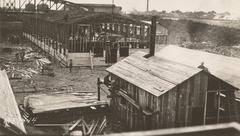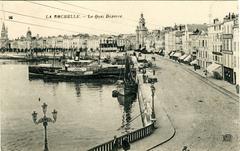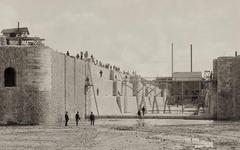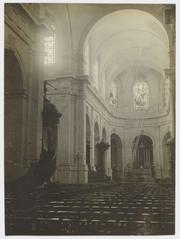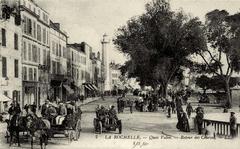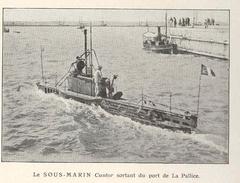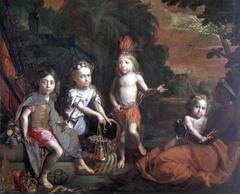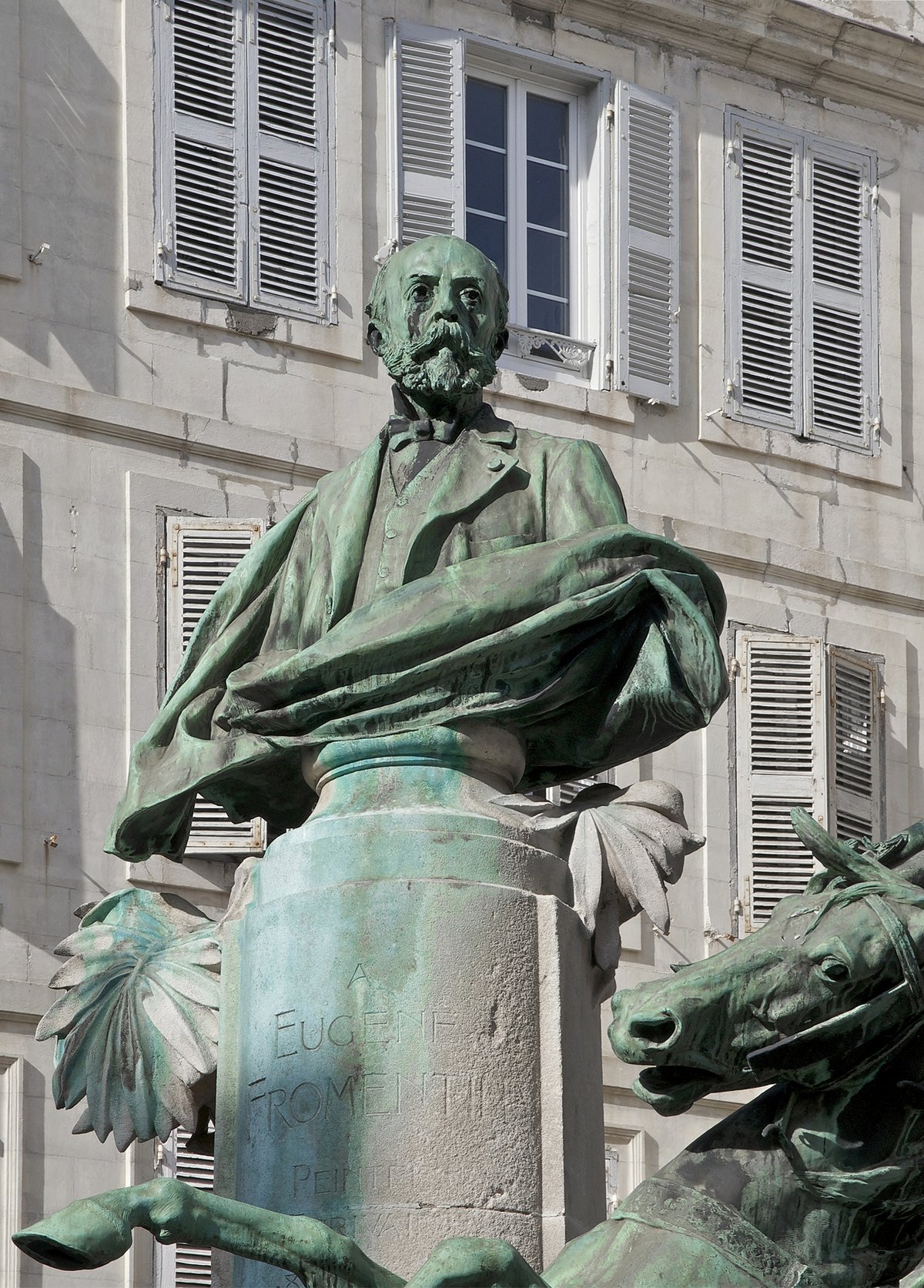
Visiting the Monument to Eugène Fromentin in La Rochelle, France: Complete Guide with Hours and Tickets
Date: 14/06/2025
Introduction
Nestled in the heart of La Rochelle, France, the Monument to Eugène Fromentin is a compelling tribute to one of the city’s most renowned sons. Celebrating Fromentin’s dual legacy as an Orientalist painter and literary figure, the monument stands as both a work of art and a testament to La Rochelle’s rich cultural heritage. Crafted by Ernest Henri Dubois and inaugurated in 1905, this public sculpture seamlessly weaves Fromentin’s artistic and literary contributions into the city’s maritime narrative. Located in the lively Place des Petits-Bancs, just steps from the Old Port, the monument is freely accessible at all hours, making it an essential stop for anyone interested in art, history, or the vibrant life of La Rochelle.
This detailed guide will provide an in-depth look at the monument’s history, artistic and symbolic features, practical visitor information, and nearby attractions—ensuring a rewarding and informed experience. For more background and planning resources, consult official tourism sites and authoritative references (Montmartre Secret; La Rochelle Tourism; Wikipedia).
Table of Contents
- Introduction
- Biography of Eugène Fromentin
- The Monument: History, Symbolism, and Artistic Details
- Context and Urban Significance
- Visiting Information
- Visitor Experience: FAQs, Photography, and Tours
- Conclusion: Planning Your Visit
- References
Biography of Eugène Fromentin
Early Life and Education
Eugène Fromentin was born on October 24, 1820, in La Rochelle (Wikipedia). Raised in an intellectually stimulating environment—his father was a doctor and amateur painter, and his mother the daughter of a naval administrator—Fromentin developed an early interest in the arts and literature. He excelled in classical studies and, after a brief foray into law in Paris, turned his focus fully to painting, studying under Jean-Charles-Joseph Rémond and Nicolas-Louis Cabat (Dictionary of Art Historians).
Artistic Career and Orientalist Influence
Fromentin became a pioneer of French Orientalist painting, profoundly influenced by his travels to Algeria. His breakthrough came with “Gorges de la Chiffa” at the 1847 Salon, and he continued to produce evocative scenes of North African life, often depicting horses and riders in dramatic landscapes. His work, inspired by Eugène Delacroix, is celebrated for its vibrant color, expressive figures, and ability to capture the grandeur and dignity of Algerian culture (Wikipedia; Britannica).
Literary Achievements and Art Criticism
Fromentin was also an acclaimed writer. His travelogues “Un été dans le Sahara” (1857) and “Une année dans le Sahel” (1858) are lauded for their vivid observation and emotional depth, while his novel “Dominique” (1862) is a notable work in 19th-century French literature. As an art critic, his “Les Maîtres d’autrefois” (1876) stands as a foundational text in modern art history and criticism (Britannica; Wikipedia).
Relationship with La Rochelle
Fromentin maintained a lifelong connection to La Rochelle. The city’s light and maritime atmosphere influenced his artistic vision, and he referenced the region frequently in his work. The Lycée Eugène Fromentin and the monument at Place des Petits-Bancs are lasting local tributes to his memory (Monnuage).
The Monument: History, Symbolism, and Artistic Details
Artistic Composition and Visual Impact
The monument, designed by Ernest Henri Dubois with architecture by René Patouillard Demoriane, is an outstanding example of early 20th-century public sculpture (Montmartre Secret). Its central feature is a bronze bust of Fromentin atop a tall limestone column, his gaze directed toward the port—a nod to his passion for travel and exploration.
Beside the column, a dynamic bronze group features a rearing horse and a North African rider in traditional clothing, recalling the fantasia scenes that Fromentin so often depicted in his paintings. At the base, a stack of books crowned with a laurel wreath references his literary achievements.
The composition is visually striking: the dignified stillness of the bust contrasts with the energy of the equestrian group, creating a harmonious tension that draws the viewer’s eye (Montmartre Secret; Véronique D).
Symbolic Elements
- The Bust: Portrays Fromentin as a mature, contemplative figure, symbolizing wisdom and his status as a respected artist and thinker. The orientation toward the port links him to La Rochelle’s maritime legacy.
- Equestrian Group: Embodies Fromentin’s Orientalist oeuvre, referencing his celebrated Algerian subjects. The horse, representing freedom, and the rider, dressed in North African garb, evoke the adventurous spirit and cultural curiosity that defined his work (Britannica).
- Books and Laurels: Celebrate Fromentin’s literary accomplishments, with the laurel as a classical emblem of artistic and intellectual achievement.
Artistic Style and Influences
Dubois’s academic training is evident in the monument’s formal beauty and anatomical precision, while the dynamic modeling of the figures injects a sense of narrative drama. The monument reflects the broader 19th-century fascination with Orientalism, as well as Fromentin’s own influences from artists like Delacroix and Corot (Wikipedia; Britannica).
Context and Urban Significance
Situated in Place des Petits-Bancs, near the Grosse Horloge and Old Port, the monument occupies a prominent place in the urban landscape (POP: la plateforme ouverte du patrimoine). Its location ensures high visibility and easy access for locals and visitors alike. The monument is integrated into daily city life, often serving as a gathering point and even as an informal spot for cyclists and passersby (Véronique D).
As a civic landmark, it anchors annual commemorations and educational activities, reinforcing La Rochelle’s commitment to celebrating its cultural heritage. The monument also reflects the values of the early 20th-century French Republic, using public art to promote civic identity and pride.
Visiting Information
Hours, Tickets, and Accessibility
- Visiting Hours: Open 24/7, year-round, as the monument is outdoors in a public square.
- Tickets: No admission fee; visiting is free.
- Accessibility: Pedestrian-friendly, with paved walkways and benches. Wheelchair accessible, though some nearby cobblestone areas may be uneven.
Travel Tips
- Getting There: Located at Place Fromentin, a short walk from the Old Port and La Rochelle Cathedral. The nearest bus stop is Place de Verdun (bus lines 1, 2, 3, 4, 7, 8, 11), and the train station is about 20 minutes away on foot (Yélo La Rochelle).
- Parking: Public parking available at Parking Verdun and Parking Vieux Port Ouest (La Rochelle Parking Guide).
- Best Times to Visit: Daylight hours are ideal for viewing details and photography. Spring and early autumn offer pleasant weather and fewer crowds.
Nearby Attractions
- Old Port (Vieux Port): Bustling harbor with restaurants and cafés.
- Grosse Horloge: Medieval city gate and clock tower.
- Musée des Beaux-Arts & Musée du Nouveau Monde: Art museums featuring works related to Fromentin.
- La Rochelle Aquarium: Popular family attraction.
Visitor Experience: FAQs, Photography, and Tours
Frequently Asked Questions
Q: What are the visiting hours?
A: Open 24/7; best visited during daylight.
Q: Is there an admission fee?
A: No, it’s free to visit.
Q: Are guided tours available?
A: Yes, many walking tours incorporate the monument. Booking via the tourist office is recommended (La Rochelle Visites Guidées).
Q: Is the site accessible for reduced mobility?
A: Yes, with paved paths, though some cobblestones exist nearby.
Q: Can I take photographs?
A: Yes, photography is encouraged.
Photography Tips
Visit in the morning or late afternoon for the best light. The bronze’s patina and the square’s greenery make for atmospheric photos. Weekdays are less crowded, providing clearer shots.
Tours and Events
Guided tours, often available through the La Rochelle Tourist Office, provide context on Fromentin’s life and the monument’s symbolism. The site is occasionally included in cultural events and art festivals; check local calendars for updates.
Conclusion: Planning Your Visit
The Monument to Eugène Fromentin is more than a sculptural tribute—it is a living part of La Rochelle’s cultural identity. Its artistic detail, symbolic richness, and central location make it a must-see for anyone exploring the city. Plan your visit during daylight hours, take advantage of guided tours and nearby attractions, and don’t forget to explore additional resources and interactive guides via local tourism sites. For audio guides and up-to-date event listings, consider downloading the Audiala app.
Immerse yourself in the legacy of Eugène Fromentin and discover the vibrant heritage that continues to shape La Rochelle today.
References
- Discovering the Monument to Eugène Fromentin in La Rochelle: History, Hours & Tips
- Artistic and Symbolic Significance of the Monument, Montmartre Secret
- Monument to Eugène Fromentin in La Rochelle: Visiting Hours, Tickets, and Historical Insights, POP
- Eugène Fromentin, Britannica
- Monument to Eugène Fromentin, Musée d’Orsay
- Visiting the Monument to Eugène Fromentin in La Rochelle: Hours, History, and Tips, La Rochelle Tourism
- Eugène Fromentin, Wikipedia
- Yélo La Rochelle Public Transport
- La Rochelle Parking Guide


